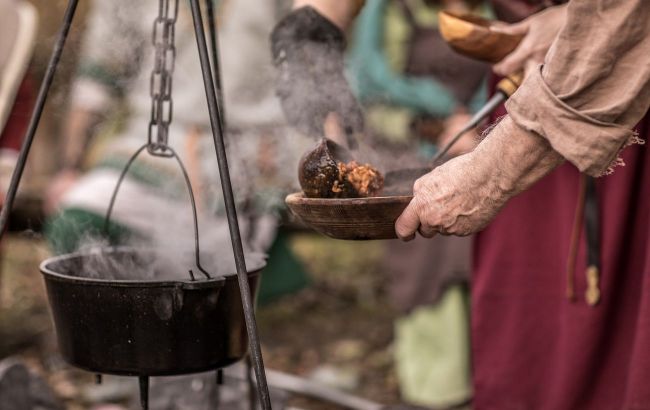What did people eat 3,000 years ago? These ancient recipes might surprise you
 What our ancestors cooked and ate thousands of years ago (photo: Getty Images)
What our ancestors cooked and ate thousands of years ago (photo: Getty Images)
Did you know that some of the oldest dishes are still prepared in certain regions of the world? Which recipes have survived millennia, and what did our ancestors eat? Here's what people cooked thousands of years ago—and which of those dishes still exist today.
Mesopotamian stew (around 1730 BCE)
At the Yale Library in the USA, there are cuneiform tablets dating back to around 1730 BCE. These are the oldest known written recipes.
They include step-by-step instructions for making a rich stew with pieces of lamb, onions, garlic, barley, and spices—very similar to modern Middle Eastern soups.
The oldest bread baked on stone (14,400 BCE)
At the Shubayqa site in Jordan, archaeologists found remains of compressed, unleavened bread—likely the earliest baked good in human history. It was made from wild millet and barley on flat stones.
The oldest noodles: a 4000-year-old find from China
At the Lajia archaeological site, researchers discovered a pot containing remnants of noodles made from millet and wild barley, dated to about 2000 BCE.
Sućpa (ancient puree) from Europe (around 6000 BCE)
In stone caves in Britain, there is evidence of a pudding made from nettles, one of the oldest recorded vegetarian dishes known to humanity.
Flatbread on stone (ancestor of lavash)
The oldest bread findings are charred flatbreads baked directly on hot stones. Discovered in Jordan, they date back over 14,000 years (Natufian culture).
They were made using ground grain, water, and a bit of fat or ash. They resemble modern lavash or pita. The method is similar to that still used by Bedouins today.
Meat stewed in a pit
In many ancient cultures, meat was cooked in pits with hot stones, somewhere between roasting and stewing.
Meat was wrapped in leaves or clay, placed in a pit with heated stones, covered with soil, and left to cook for several hours. Maya, Chinese, and Polynesians used this method.
Today, similar techniques survive in Mexico's barbacoa, New Zealand's hāngi, and the Arab world's mandi.
Porridge made from wild grains and seeds
Archaeologists have found traces of similar dishes in ancient Egypt, India, and Africa.
The main ingredients were barley, spelt, millet, sometimes with honey, dates, or milk. It was a thick, nourishing mash that provided energy for the day—essentially the first breakfast porridge in history.
The first beer fermentation (10,000 BCE)
In China, a 10,000-year-old clay vessel for fermenting rice beer was discovered. It contained yeast residues and was accompanied by ritual drinking vessels, pointing to organized ceremonies.
The longest-lasting food—honey (5000+ BCE)
Archaeologists found jars of honey dated to 3000–5000 BCE in Egyptian tombs. The honey remained preserved to this day, proving that it doesn’t spoil for centuries.
Ancient dairy products—kefir, butter, sour milk
The earliest references to yogurt, butter, and casein were in ancient India and Mesopotamia, around 2000–1000 BCE.
Salt, fat, and ash—universal preservatives
Our ancestors knew how to preserve food: they salted meat and fish, smoked them over fire, or wrapped them in fat and ash (an early form of canned meat). In northern cultures, meat was stored in fat for up to half a year.
They also dried berries, fruits, mushrooms, roots, and leaves.
Which ancient dishes are still with us today:
Oat porridge. A direct descendant of ancient grain mixtures
Fermented dairy products (yogurt, kefir, cheese). These techniques are 3,000–4,000 years old
Beer, bread, meat, fermented vegetables. All of these originated in prehistoric times
You may be interested in:
- The top 6 zucchini dishes to try this summer
- Incredible facts about the Dniester River that will change your perspective
- Why ancient Ukrainians "baked" children in ovens—and why that shocks us today
Sources: Cambridge Archaeological Journal, National Geographic, Smithsonian Magazine, Journal of Archaeological Science, Food History Encyclopedia, The History of Human Nutrition, Oxford University Press

